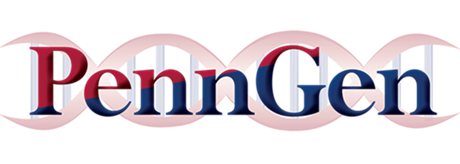Loss of appetite, failure to thrive, neutropenia (low levels of neutrophils, which are a type of white blood cell) with hypersegmentation (neutrophils that have six or more lobes), anemia with anisocytosis (red blood cell size variability) and poikilocytosis (abnormally shaped red blood cells), megaloblastic (problems with producing red blood cells) changes of bone marrow. Dogs with this disease have the capability of living a full life with the supplementation of cyanocobalamin. Cobalamin, also known as vitamin B12, is an essential vitamin made only by microorganisms and must be acquired through food. The body absorbs cobalamin through binding to a glycoprotein called IF. In dogs with this condition, the gene responsible for the receptor that contains a binding site for the IF-Cbl complex is defective, resulting in an absent receptor and an inability to absorb cobalamin.
Potential for full life with treatment
Autosomal recessive
The disorder is characterized by emaciation and moderate to severe lymphoid depletion or hypoplasia of the thymus, lymph nodes, and gastrointestinal lymphoid follicles. Mild to moderate diffuse atrophy of the duodenal and proximal jejunal mucosa and mild to moderate mucosal edema and lymphangiectasia of the entire intestinal tract may be present. Macrophages in the lymph node contain phagocytized erythrocytes and hemosiderin, and bone marrow may contain mild to moderate amounts of hemosiderin. Left untreated the bone marrow will be hypocellular with scattered clusters of megaloblastic erythroid and myeloid cells.
AMN and NM_001002960.1:c.3G>A (Australian Shepherd)
AMN and NM_001002960.1:c.1113_1145del (Giant Schnauzer)
CUBN and NM_001003148.1:c.8746+1G>A (Komondor)
Explanation of Results
| Genotype |
Phenotype |
Interpretation |
| 2-2 (Homozygous Disease Variant) |
Unhealthy (Affected) |
Homozygous Affecteds (2-2) are expected to develop signs consistent with Cobalamin Malabsorption and all of their offspring will inherit a disease variant allele. Parents, offspring and relatives should also be tested. You may choose to contact us for a consultation on the management of this disease. 1 = Normal allele; 2 = Variant allele. |
| 1-2 (Heterozygous) |
Healthy (Carrier) |
Heterozygous Carriers (1-2) are not expected to develop signs of Cobalamin Malabsorption but each of their offspring has a chance of inheriting a disease variant allele. Parents, offspring and relatives should also be tested. 1 = Normal allele; 2 = Variant allele. |
| 1-1 (Homozygous Normal) |
Healthy (Normal, Clear) |
Homozygous Normals (1-1) are not expected to develop signs of Cobalamin Malabsorption and none of their offspring will inherit the disease variant allele. 1 = Normal allele; 2 = Variant allele. |
Fyfe JC, Hemker SL, Frampton A, Raj K, Nagy PL, Gibbon KJ, Giger U. Inherited selective cobalamin malabsorption in Komondor dogs associated with a CUBN splice site variant. BMC Vet Res. 2018 Dec 27;14(1):418. doi: 10.1186/s12917-018-1752-1. PMID: 30591068; PMCID: PMC6309081.
Gold AJ, Scott MA, Fyfe JC. Failure to thrive and life-threatening complications due to inherited selective cobalamin malabsorption effectively managed in a juvenile Australian shepherd dog. Can Vet J. 2015 Oct;56(10):1029-34. PMID: 26483576; PMCID: PMC4572816.
He Q, Madsen M, Kilkenney A, Gregory B, Christensen EI, Vorum H, Højrup P, Schäffer AA, Kirkness EF, Tanner SM, de la Chapelle A, Giger U, Moestrup SK, Fyfe JC. Amnionless function is required for cubilin brush-border expression and intrinsic factor-cobalamin (vitamin B12) absorption in vivo. Blood. 2005 Aug 15;106(4):1447-53. doi: 10.1182/blood-2005-03-1197. Epub 2005 Apr 21. PMID: 15845892; PMCID: PMC1895201.

